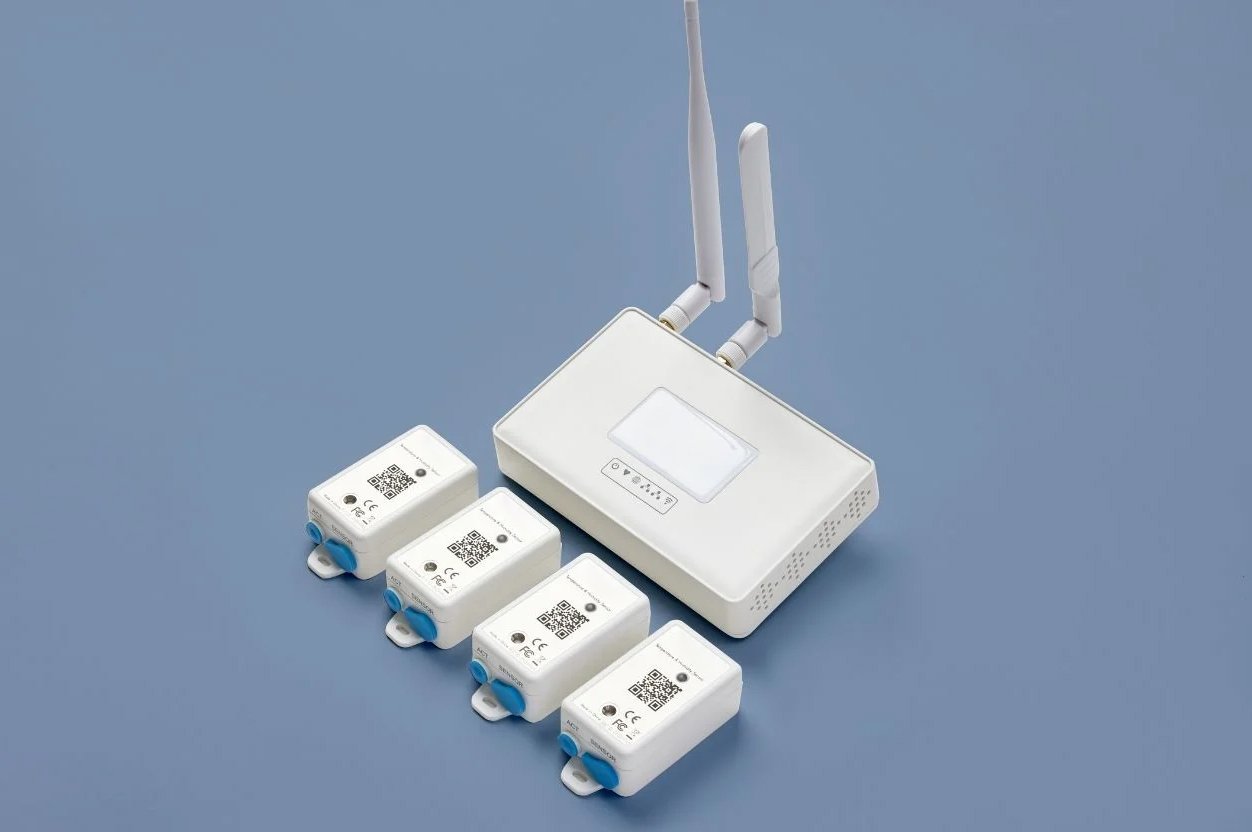3 Reasons Why You Should Use Temperature Data Loggers

Thermometers have always been the go-to tools for foodservice businesses. However, there are several disadvantages to relying solely on traditional thermometers to track your cold storage conditions. Long story short, they’re not always accurate, require extensive effort to audit, and even more time to record and analyze the data.
Fortunately, remote temperature data loggers are specifically designed to help mitigate these issues while saving you money at the same time. Currently, only 8% of businesses in the foodservice industry use temperature data loggers to manage their cold storage.
Let’s give you a reason to help expand that usage percentage by diving into more details on the differences between thermometers and temperature data loggers—and why the latter should be your new go-to.
Traditional thermometers—a relic of the inefficient past
The drawbacks of traditional thermometers begin with their design. Firstly, their function relies upon how their contained mercury reacts to climactic weather. To ensure readings are accurate, these thermometers require calibration between uses to avoid succumbing to temperature drift.
On the other hand, temperature data loggers are pre-calibrated to ensure you get accurate data every time.
Here are more reasons why you should move on from using traditional thermometers:
1. Higher risk of “pencil whipping”
Manual temperature checks involve a member of your team assigned to physically check and record the temperature of your cold storage spaces. However, during busy service hours this auditor may rush through their routine by forging the log entirely—this is known as pencil whipping.
Pencil whipping puts your business at risk because temperature excursions may go unnoticed. In turn, avoidable inventory loss through spoilage could occur without detection.
Additionally, should you receive a visit from a health inspector, a lack of records (or detection of incorrect records) could give your business a low inspection score. Or worse—cause the full shutdown of your operations entirely, depending on the severity and other factors.
2. Thermometers only provide data on current temperature
Another drawback of thermometers is that they only provide a snapshot in time of conditions in your cold storage units. While your staff may conduct temperature checks frequently, you still won’t be able to identify temperature excursions that happened earlier or during off-hours.
This puts your restaurant at risk of potentially serving spoiled food—endangering both your customers and your business.
Temperature data loggers—the next step for sustainable restaurant operations
A remote data logger is a device that digitally measures and records various data points in your food business. Some businesses utilize light monitoring devices to limit energy use, while others use water submeters to measure utility expenditures.
However, temperature data is some of the most critical information you must track in the foodservice industry. Putting temperature data loggers at the top of your list of must-haves.
Temperature data loggers measure and record the temperature of your cold storage spaces. This data is then relayed to a cloud—allowing users to access their data from any internet-enabled device.
Perishable inventory loss is one of the most expensive parts of running a food service business—making data loggers all the more crucial to have. In fact, the average restaurant operation wastes 28-35% of its revenue annually on pre-consumer food waste.
Here are more advantages to using temperature data loggers:
1. They serve as labor-saving devices
Temperature data loggers can save your staff from tedious back-and-forth routines. Average manual temperature checks would be required about 4 times a day. This is a time-consuming, repetitive task that you can automate with a data logger.
2. Health ordinance compliance made easy
Many jurisdictions require food service businesses to keep a verified record of their cold storage temperatures over time. Therefore, when an inspection does visit your location for an audit, you can ensure you provide them with accurate logs to prevent fines and other consequences.
3. They can save your restaurant on energy bills and avoidable expenses
You can ensure not just consistent energy monitoring but also actionable proactive strategies. With the right temperature data logger, you can stay vigilant when it comes to early signs of equipment failure. This level of monitoring would allow you ample time to conduct preventive maintenance—avoiding potentially higher expenses for fully replacing equipment.
Because of the more accurate information temperature data loggers can give you, they can provide you with more detailed insights—helping you better optimize your restaurant’s energy usage.
Add all of this up, and temperature data loggers can actually help you maximize your ROI.
What’s a temperature data logger you can go for?
GlacierGrid Monitoring is a revolutionary temperature data logger that puts money back in your pocket while saving your inventory, reducing your labor hours, and protecting your customers.
With our temperature monitoring system, you can enjoy the following benefits:
- Automatic data logging sensor—You stay updated with crucial temperature data that are sent straight to your computer or mobile device.
- Reliable LoRWAN connection—Our monitoring device uses Long-range Radio Wide Area Network connection instead of WiFi. This means unhindered connectivity, especially in dense, metal-plated, and concrete-walled restaurant environments.
- Highly cost-efficient—For only $12.50 per sensor per month, you can expect to save a guaranteed $15,000 annually.
With high reliability, accuracy, and ROI, GlacierGrid Monitoring is designed to help your restaurant run more sustainably.
So, want to start monitoring for smart energy optimization? Try GlacierGrid!







